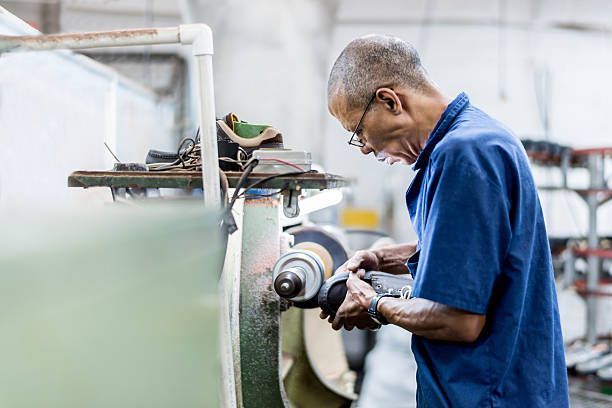How many jobs are available in shoe manufacturing? Shoe manufacturing has been an integral part of the global economy for centuries, providing footwear to billions of people worldwide.
From classic leather dress shoes to athletic sneakers, the industry has evolved to meet the diverse needs and fashion preferences of consumers.
However, beyond the fashionable appeal and utility of shoes lies an expansive job market that supports this thriving sector.
For individuals considering a career in shoe manufacturing or those curious about the employment prospects within the industry, understanding the availability of jobs is of paramount importance.
In this article, we will delve into the question, “How many jobs are available in shoe manufacturing?”
We will explore various factors that influence job availability in this industry, providing valuable insights into the potential career opportunities that await aspiring individuals in the dynamic world of shoe manufacturing.
Also Read:
How Many Jobs Are Available in Accident & Health Insurance?
How Many Jobs Are Available in Specialty Foods?
How Many Jobs Are Available in Shoe Manufacturing?
The shoe manufacturing industry is a significant contributor to global employment, providing jobs to a substantial number of individuals across various countries.
While it is challenging to provide an exact figure on the total number of jobs available in shoe manufacturing, it is evident that the industry offers a significant employment potential.
One of the primary factors influencing job availability in shoe manufacturing is the size and scale of the industry itself.
With the demand for shoes continuously growing, companies need a vast workforce to meet production targets and fulfill customer orders.
From designing and prototyping to material sourcing, cutting, stitching, assembly, quality control, and distribution, the entire shoe manufacturing process requires a multitude of skilled individuals.
Moreover, the shoe manufacturing industry operates on a global scale, with production facilities and supply chains spanning various regions.
Countries renowned for their shoe manufacturing expertise, such as China, India, Vietnam, Brazil, and Italy, have established themselves as major hubs, providing a substantial number of jobs in the sector.
However, it’s worth noting that job availability can also vary within regions and countries due to factors like economic conditions, industry competitiveness, and government policies.
In recent years, automation and technological advancements have transformed the shoe manufacturing landscape.
While these innovations have led to increased efficiency and productivity, they have also impacted the traditional job market.
Certain repetitive and labor-intensive tasks have been replaced by machines, resulting in a shift in the types of jobs available.
As a result, the industry now demands a more skilled workforce proficient in operating and maintaining advanced manufacturing technologies.
Furthermore, the rise of sustainable and ethical manufacturing practices has opened up new avenues of employment within the industry.
As consumers prioritize environmentally friendly and socially responsible footwear, companies are embracing sustainability initiatives, leading to the creation of jobs related to eco-friendly materials, recycling, and ethical supply chain management.
Overall, while it is challenging to provide an exact number, the shoe manufacturing industry offers a significant number of jobs globally.
With a diverse range of roles and opportunities, individuals with varying skill sets can find employment in this dynamic sector.
By keeping up with the evolving demands of the industry, developing relevant skills, and staying informed about regional trends, aspiring individuals can explore rewarding career paths within shoe manufacturing.
Job Roles and Skill Requirements in Shoe Manufacturing
Job roles in shoe manufacturing encompass a wide range of functions, each requiring specific skills and expertise.
Common positions include shoe designers, pattern makers, material sourcing specialists, cutting and stitching operators, quality control inspectors, and distribution coordinators.
Technical skills such as pattern drafting, machine operation, and quality assessment are vital.
Additionally, knowledge of materials, trends, and fashion aesthetics is crucial for designers.
With the integration of technology, proficiency in operating automated machinery and understanding computer-aided design (CAD) software is increasingly important.
Adaptability, attention to detail, teamwork, and problem-solving abilities are also valued.
Continuous learning and staying updated with industry advancements are essential to excel in the evolving landscape of shoe manufacturing.
Challenges and Opportunities in Shoe Manufacturing Employment
Shoe manufacturing employment faces both challenges and opportunities.
One challenge is the increasing automation, which reduces the demand for certain repetitive tasks, requiring workers to adapt and acquire new skills.
Additionally, global competition and cost pressures can lead to job outsourcing.
However, opportunities arise from the growing demand for sustainable and ethically produced shoes, creating jobs in eco-friendly materials, recycling, and responsible supply chain management.
Advancements in technology also create opportunities in operating and maintaining automated machinery.
Furthermore, the industry offers career growth prospects and diverse roles for skilled professionals, including designers, technicians, and managers, providing avenues for personal and professional development.
Strategies for Finding Employment in Shoe Manufacturing
To find employment in shoe manufacturing, individuals can employ several strategies.
First, conducting thorough research on companies within the industry and identifying their hiring practices can provide valuable insights.
Networking within professional communities, attending industry events, and connecting with professionals already working in the field can open doors to potential job opportunities.
It is also essential to build a strong resume that highlights relevant skills and experiences.
Additionally, considering internships or apprenticeships to gain hands-on experience can increase chances of securing employment.
Finally, utilizing online job boards, industry-specific websites, and recruitment agencies can help identify and apply for available positions.
Also Read:
How Many Jobs Are Available in Agricultural Chemicals?
How Many Jobs Are Available in Food Distributors?
Conclusion
The shoe manufacturing industry presents a significant number of job opportunities globally.
While an exact figure is challenging to determine, the industry’s vast scale, global presence, and continuous demand for shoes contribute to a substantial employment potential.
Factors such as regional variations, technological advancements, and sustainability initiatives shape the job landscape.
With the right skills, knowledge, and adaptability, individuals can explore diverse roles in design, production, quality control, and supply chain management.
Staying informed about industry trends, networking, and utilizing various job search strategies can increase the chances of finding employment in this dynamic and evolving sector.
The shoe manufacturing industry continues to be a promising avenue for individuals seeking rewarding careers.














